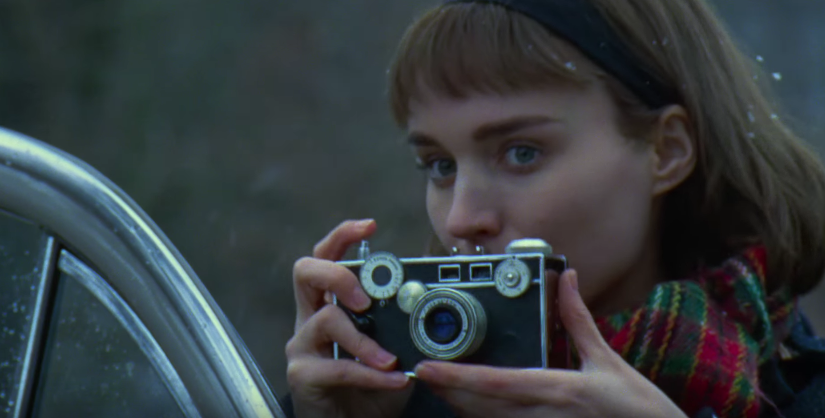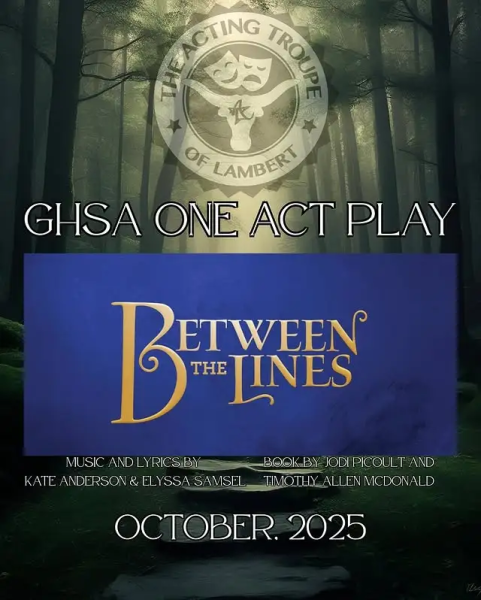“Carol”: revolutionary film for the LGBTQ community- overall masterpiece
Rooney Mara as Therese Belivet in the film ‘Carol’ takes a picture of the elegant Carol Aird played by Cate Blanchett.
Carol, a film based off of the book The Price of Salt, has received many Oscar nominations, and raving reviews due to its revolutionary content in the film industry. However, due to this content, the film has had a more limited release to the public.
The film follows the meeting of two women and their following relationship, and the struggles faced by lesbian women in the 1950’s.
On my one free day this week, I scoured the Internet for the closest showing of the film. At first because of its positive reviews, I assumed it would be playing at any theatre. But I found that local AMC’s weren’t showing it anywhere, so I ended up finding the closest tickets at the Avalon in Alpharetta. I think this has something to say about the acceptability of these themes in such a southern area, with most likely less accepting views on homosexuality.
I was immediately enchanted once the film started by the stunning cinematography, design, and musical score. The film starts at one of the final scenes of the film, the two women are eating dinner together, the elder blonde shows more confidence, while the younger brunette seems nervous in their silence. Immediately the mind assumes that they are lovers, trying to go out to dinner and conceal their homosexuality in an non-accepting era. As a naïve friend approaches, the blonde leaves, which the mind continues to connect dots, as the brunette is alone hyperventilating at the table waiting for the naïve male to return. Then when she is in the car with friends the film uses flashbacks to transition to the beginning of the story of the two women. The exposition establishes the confused and unfocused life of the mousy Therese (pronounced ‘Terez’) Belivet (played by Rooney Mara). She is working in a doll shop to make money, while she builds her photography portfolio. One day she is approached by the elegant Carol Aird, (played by Cate Blanchett) who wears a stunning scarlet outfit complete with a fur coat and gloves. The at first awkward conversation as Carol tries to find the perfect gift for her daughter, eventually they are able to become friendly and charming towards one another, but when Carol departs, she leaves her gloves behind. This moment was perfectly portrayed by the actresses to create the ambiguity and charm that was necessary for this meeting. Therese is very nervous of this attraction, and Carol seems to be fully aware of the situation, and finds Therese’s quirky nature charming.
The director and the actors seemed to have a firm grasp of the fear and uncertainty involved in the eventual progression of their relationship. The film brilliantly addresses the reality of a person discovering their sexuality, as well as the eventual repercussions of this in the setting.
Being set in the 1950’s, the film had the potential to be cheesy and over-produced in an attempt to try to portray the time period. However, the film is seamless in its sets, costumes, makeup, and overall editing. It was very refreshing to see actors and actresses appear to be a part of the time period, versus other period films that seem to have current actors plucked into an over-produced film trying too hard to instill the time period.
Cinematography was an extra bonus for this film. It already has everything it needed to be as effective and necessary to the artistic community. However, specific choices were made to elevate this film to excellent to monumental. Carol is full of stunning transitions, which seem to perfectly assemble the puzzle pieces of the plot, as well as enhance the emotional intensity of these two lovers. The editors used the elements around them to create seamless connections between scenes and the overall plotline.
The musical score by Carter Burwell is artfully minimal, but the overarching chord progressions that are used and transposed during different moments of the film creates a haunting fear about the future of this forbidden love, yet is simultaneously joyful. The strings used give the flourishes another dimension, and when put together with the cinematography establish the stunning overall mood of the film.
With every technical element combined with the flawless performances by Cate Blanchett and Rooney Mara make this movie the masterpiece that it is. They make the love that the characters experience very genuine, and in no way different than any heterosexual relationship. This factor is monumental for the progression of the lesbian community in particular, a group that has been sexualized and considered illegitimate by many in the world still. Cate Blanchett flawlessly portrays the turmoil of a woman fighting for her humanity while all odds are against her, while Rooney Mara brilliantly takes on the anxiety and fear of a woman discovering her homosexuality in the time period. Both performances give a reality to ideas and themes that are hidden away by society, and liberate the lesbian women in the world by showing the humanity of their situations.
Your donation will help support The Lambert Post, Lambert High Schools student-run newspaper! Your contribution will allow us to purchase equipment and cover website hosting costs.








